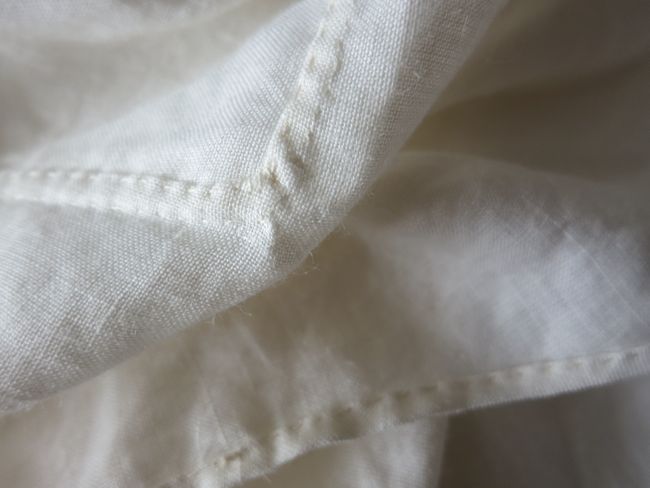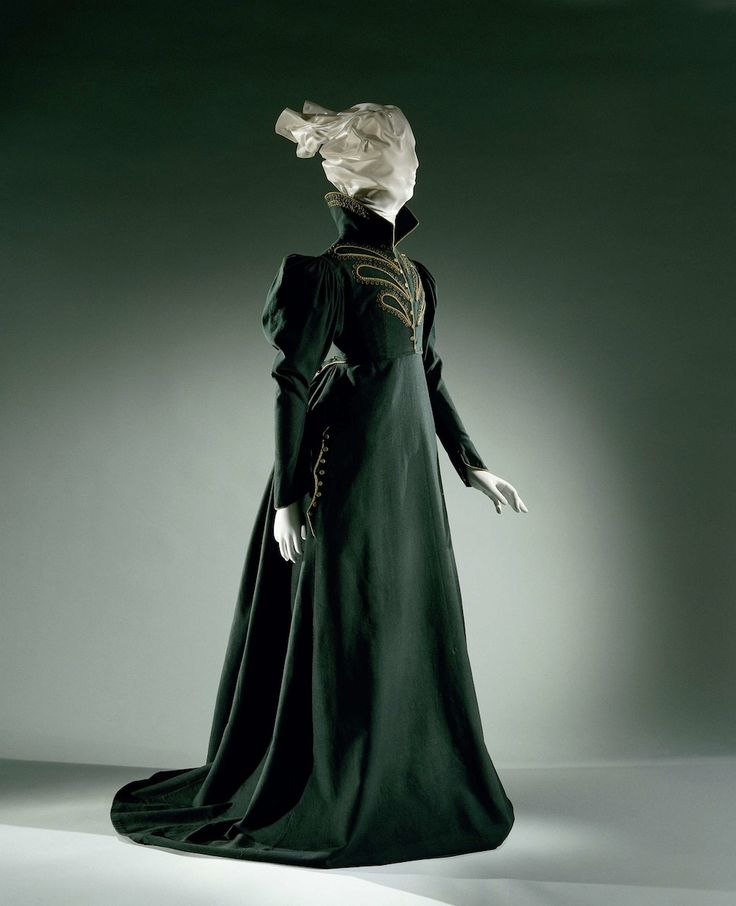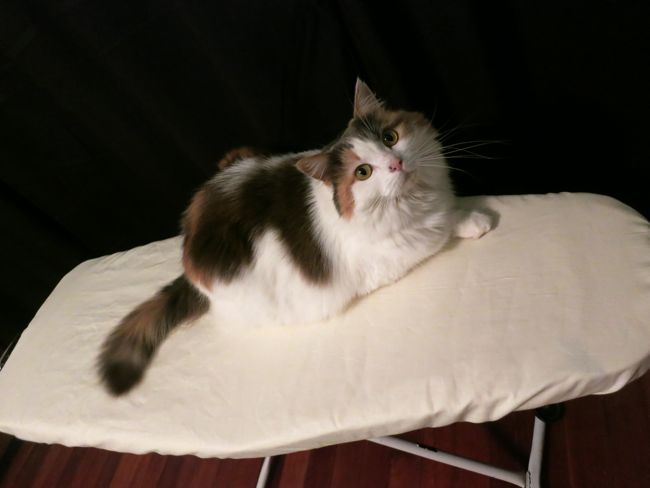When I made my nettle shift/smock I wanted my construction to be reasonably historically accurate, but in researching 14th century smocks* I discovered that there are so few visual images of smocks of that period, so few extent garments (none of which remotely match the visual record) and so few written mentions that we really don’t know how 14th century smocks were made. The best guesses are based on extrapolating backwards from extent garments from later periods, and matching that up to the few period depictions and the single extent (sorta, it’s been missing since WWII so all we have is a black and white photograph) example (which doesn’t look at all like period depictions) and known sewing techniques from other garments.
Many reproduction medieval smocks/shifts/chemises are constructed like 16th-18th century shifts – a series of rectangles and triangles, with gussets under the arm, and side gores to allow the shift to flare. It’s a frugal, practical and durable construction method. However the single extent (sorta) 14th century smock, is side gore-less (and while there is a 13th century shift that does have side gores, both it and the 14th century example are sleeveless – very helpful). So other patterns are certainly plausible.
In addition to wanting my shift to be at least plausible, I also needed it to be as quick as possible. I’m time poor at the moment. So I opted for a more-or-less midpoint between the two patterns: a simple one piece T shape with flared sides.

The T-shape is cut to the full width of the fabric, so I didn’t have to hem the sleeves, because they end on the selvedge edges. The flared sides are slightly curved, because both extent medieval shifts have curved sides. The only extra pieces are square gussets to set under the arms.

As you can see, cutting the garment this way leaves a scrap of triangular fabric cut from under the arm, effectively ‘wasting’ fabric, which makes it slightly less historically plausible, as fabric was so valuable it would have been used as frugally as possible.

With the pattern sussed, I sewed.
Felicity, as per our cat-owner sewing agreement, helped:

The smock is sewn with silk thread (would linen be more accurate? Likely, but since I was using ramie/nettle instead of linen I felt a little thread jiggery pokery was not really the biggest issue) with basic running backstitches. The neck edge and hem are simply turned twice and stitched down with the same running backstitches.

As I began setting in the sleeve gussets the problem with my pattern became immediately obvious. Without a shoulder seam, there are stress points where the corner of the gusset meets the shift are going to be quite vulnerable to tearing.

A shoulder seam would have provided extra strength to this point, and made it easier to set the gusset, and would also have let me cut the sleeves alongside the smock, saving fabric, and giving me full-length sleeves, instead of 3/4 length sleeves.

I could have skipped a gusset altogether, but that would have reduced my arm range in the smock, and it would still have been very vulnerable to underarm tears – perhaps even more so than with the gusset. I suppose I could have cut across the underarm at an angle, as if the gusset was there.

In order to re-inforce the gusset, and stop the ramie from fraying (it frays badly) I flat felled all the seams, just as you would with an 18th century shift, though I haven’t been able to find information on whether that was done with medieval smocks (it’s seen on some examples of medieval wool garments, and makes sense with linen, so I’m guessing it’s more likely than not).

Many of you asked about ramie/nettle fabric – I’ll be doing a full terminology post, but here is a close up of the fabric to try to show you the texture as much as possible. You can clearly see that it is fuzzier and more fibre-y than linen:

Unlike linen, ramie doesn’t seem to soften press and meld together as you sew it. It’s much ‘drier’ and crisper, and I suspect will not wear as well. It’s also itchier, so I’m glad that I didn’t put as much effort into this smock as I would one of proper handkerchief linen.

Ramie is a lot like linen though, especially in that it finger-presses beautifully. Sewing all those felled seams was a breeze, and turning and sewing the hem and neck was also easy.

I did wear the shift to climb trees and scramble up a steep hill and carry things around, and it held up very well (without even a dress over it to protect it), so the sleeve gussets aren’t as fragile as I thought they might be.

However, having made this shift, I don’t think the construction is the most plausible method for medieval shifts, simply because it isn’t the best use of fabric (though I’d have to do more research on the width of medieval linens to find out what layout would be most likely), and because it leaves weak points in the garment, and I can’t imagine even the richest of medieval queens being thrilled about a shift that ripped out under the arms. In the future, I will at least be constructing my shifts with separate sleeves and shoulder seams.
*translation: reading all my historical costuming books that mention medieval clothes at all, all the main medieval blogs, checking all my pinterest links, and finding almost nothing, and finally just polling the brilliant minds of the Historical Sew Fortnightly facebook group for information






















